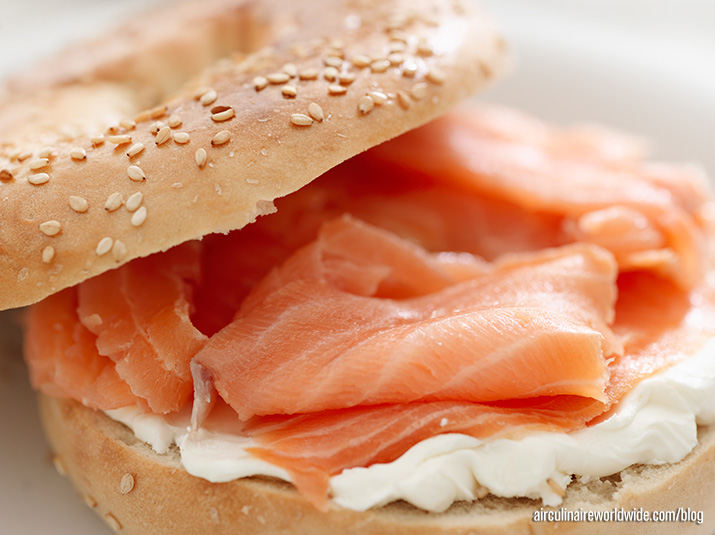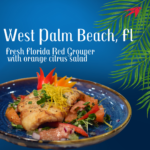Let’s dive right into a learning exercise to combat the prevalent misunderstanding regarding smoked salmon versus lox. In fact, there are more than just these two types of salmon that end up causing confusion. The real crux of the issue is the misuse and interchanging of the terms that leaves everyone unsure of what is expected. Each one is distinctly different in its preparation, taste, texture and cultural context. In fact, the only major similarity is the fact that it is salmon. In order to better meet customers’ expectations, it is important to be armed with knowledge.
Lox
- Lox is traditionally made from the belly of the salmon, but other cuts are used today.
- It gets its name from the Yiddish word for salmon, which is “laks.”
- The salmon is salt-cured or brined and never smoked or cooked in any way.
- The flesh is bright in color and has a creamy, soft texture.
Gravlox
- Gravlox is a traditional Scandinavian-style of salt- and sugar-cured salmon, with the addition of fresh herbs, and sometimes alcohol.
- The word “grav,” translated in English means “grave,” is used in the name since the fish was commonly buried or placed under a weight during the curing process.
- Gravlox is never smoked or cooked in any way.
- The flesh is slightly translucent and has a herbaceous flavor.
Nova Lox / Nova Scotia Salmon
- The name is derived from a time where most of the salmon in New York City came from the Nova Scotia area, but the name actually refers to its preparation style.
- The salmon is brined or cured like lox.
- The fish is then cold-smoked.
- The flesh is bright in color, and has a slightly smoky flavor with slightly firm flesh.
Scotch or Scottish Smoked Salmon
- A mixture of salt, sugar and spices is applied directly to the flesh for dry-brining.
- The dry-brining process occurs over several days.
- At the end of the dry-brining process, the mixture is rinsed off the fish; then the fish is cold-smoked.
- The flesh is lighter in color, has a rich smoky flavor and firm texture.
Cold-Smoked Salmon
(The most commonly found salmon in our kitchens.)
- The flesh is cured with a salt and sugar mixture.
- Spices, or a dry rub, can be applied, but not necessary.
- The flesh is cold-smoked around 80 F for several days.
- The result is a dark color and firm flesh with a deep smoky flavor.
Hot-Smoked Salmon
- The fish can be seasoned with a mixture of herbs and spices, but not necessarily brined; is smoked over high heat until cooked all the way through.
- Usually, it is sold in full filet form, similar to a cooked or grilled piece of salmon.
- This form of salmon is very popular in the Pacific Northwest.
- The texture is dryer and has a very distinct smoky flavor.
Questions?
If you have any questions about this article or flight crew culinary training, contact me at rpeterson@airculinaire.com. For questions about in-flight catering, contact weborders@airculinaire.com.





